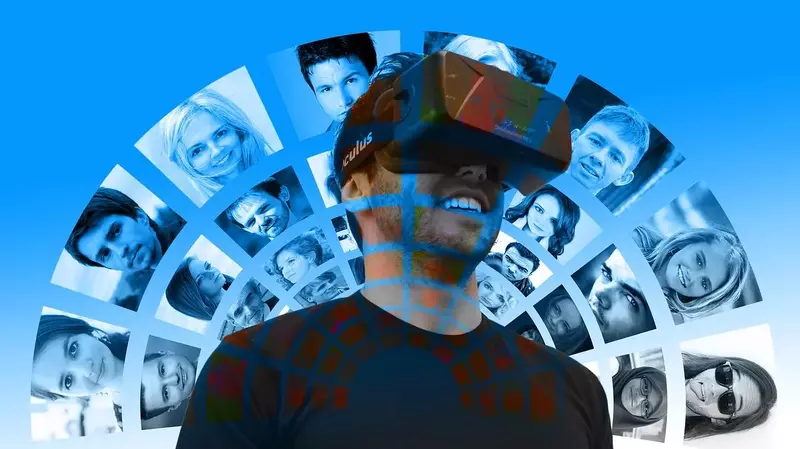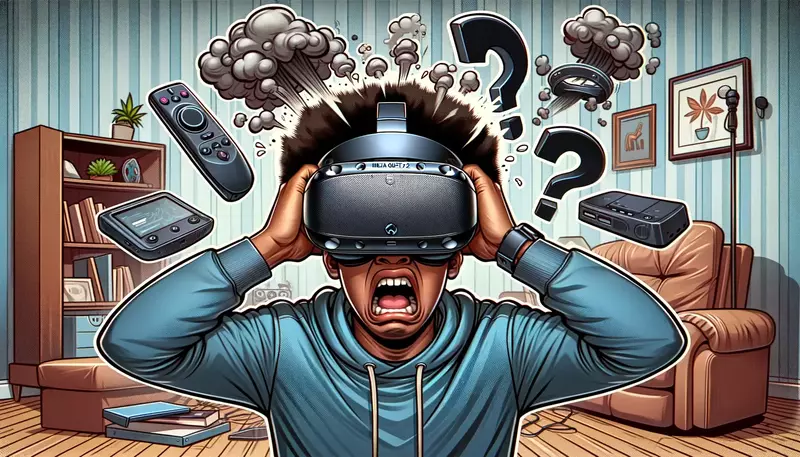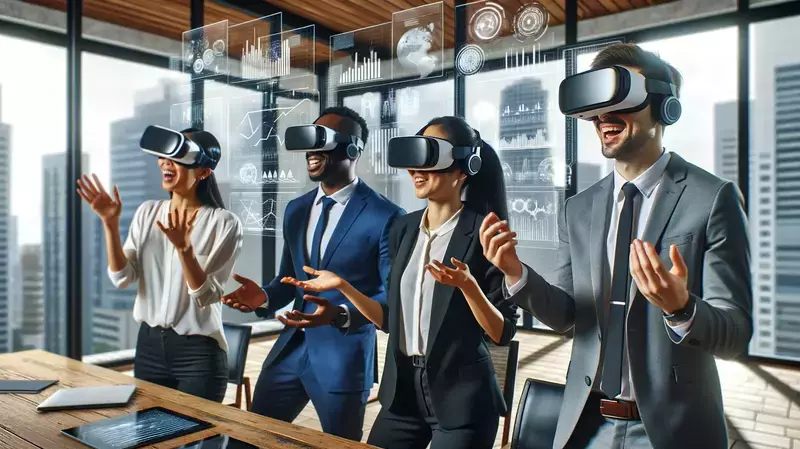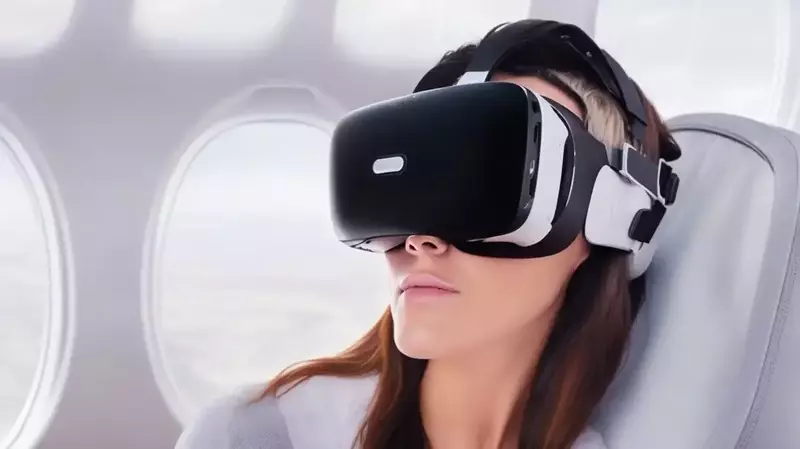This site contains affiliate links to products, and we may receive a commission for purchases made through these links.
If you’re wondering where can I experience virtual reality, look no further. For those eager to explore the captivating world of virtual reality, there are a variety of opportunities available both in public and at home.
Whether you’re a gamer seeking thrilling adventures or an explorer eager to learn about this fascinating technology, we’ve got you covered.
In this blog post, we will delve into various avenues for experiencing virtual reality at home and in public spaces such as VR arcades and centers. We’ll also introduce free VR experiences that offer a taste of what’s possible without breaking the bank.
Furthermore, we’ll explore educational opportunities within the realm of virtual reality and discuss how online communities can enhance your overall VR journey.
So join us as we navigate through these exciting possibilities and answer the question: where can I experience virtual reality?

Exploring Virtual Reality in the Home
For those wanting to explore virtual reality in the home, there are numerous options available that cater to a range of budgets and preferences.
Setting up a VR system at home can provide endless hours of entertainment, education, and exploration.
In this section, we’ll discuss how to set up a virtual reality experience in your own home.
Choosing the Right VR Headset
The first step is selecting the right VR headset for your needs. There are two main types of headsets: standalone and tethered.
Standalone headsets like Oculus Quest 2 do not require any additional hardware or devices to operate; they have built-in processors and screens.
Tethered headsets such as HTC Vive Pro 2or PlayStation VR need to be connected to a compatible gaming console or PC with sufficient power.
Budget Considerations
- Oculus Quest 2: Starting at $299, it’s an affordable option that doesn’t compromise on quality.
- Sony PlayStation VR: If you already own a PS4/PS5 console, adding PSVR starts around $350 for the bundle package.
- Tethered PC Headsets: Prices range from $400-$1000+, depending on features and brand reputation (e.g., HTC Vive Cosmos).
Selecting Compatible Games & Experiences
Your choice of headset will determine which games and experiences are accessible since some content may be exclusive to specific platforms. Popular online stores include SteamVR for PC headsets, Oculus Store for Quest and Rift devices, and PlayStation Store for PSVR.
Additionally, you can explore free VR experiences available on platforms like Steam or through the Oculus store.
Setting Up Your Play Space
To guarantee an enjoyable and safe experience, it is essential to designate a suitable play area in your home.
For an optimal experience, you’ll need to designate a sizeable play area – at least 6.5×6.5 feet of clear space is required for most systems; however, certain titles may necessitate more room for unrestricted movement.
- Clear the Area: Remove any furniture or objects that could pose a tripping hazard.
- Floor Mat: Consider placing a floor mat in the center of your play area as a tactile reminder of your boundaries.
- Boundary System: Many headsets include built-in boundary systems that allow you to set virtual walls visible within the headset when approaching real-world limits (e.g., Oculus Guardian).
In summary, creating an immersive virtual reality experience at home is achievable with careful planning and consideration.
By selecting the right headset based on budget and compatibility requirements, exploring various content options tailored to personal interests, and setting up a safe play environment – anyone can enjoy endless hours of engaging VR entertainment from their own living room.
Investigating virtual reality in the comfort of one’s own residence is an excellent way to experience this novel technology without needing to step outside. Now, let’s look at how you can find VR arcades and centers for an even more immersive experience.
To experience virtual reality (VR) at home, you need to choose the right headset for your needs and budget. Standalone headsets like Oculus Quest 2 are affordable options that don’t require additional hardware, while tethered headsets such as HTC Vive Cosmos or PlayStation VR need a compatible gaming console or PC with sufficient power.
Locating VR Arcades and Centers
For those seeking to experience VR beyond the home, numerous options exist, including virtual reality arcades and centers.
VR arcades and centers have been appearing in many places, offering a variety of experiences for gamers, explorers or those who want to explore the world of virtual reality.
Finding a Local VR Arcade or Center
To locate a VR arcade or center near you, simply search online using keywords like “virtual reality arcade” followed by your city’s name. Websites such as VRWorlds and SpringboardVR Locations also provide directories where you can find local establishments offering immersive experiences.
What to Expect at a VR Arcade or Center
- Variety: Most locations offer an assortment of games and experiences catering to different interests – from action-packed adventures to serene exploration environments.
- Pricing: The cost for experiencing virtual reality at these venues varies depending on factors such as location, time spent in the simulation, and the type of equipment used. Generally speaking though, expect prices ranging from $20-$50 per hour.
- Safety Measures: Due to COVID-19 concerns, many facilities now require advanced booking with limited capacity restrictions in place along with sanitation protocols between user sessions ensuring a safe environment for everyone involved.
Tips for Your First Visit
- Browse through their website beforehand: Familiarize yourself with what they offer so that when you arrive, you can make the most of your time there.
- Wear comfortable clothing: Since virtual reality often involves movement and physical activity, dress accordingly to ensure a pleasant experience.
- Ask for assistance: If it’s your first time trying VR or if you’re unsure about how to use the equipment, don’t hesitate to ask staff members for help. Staff members are usually willing to provide assistance if needed.
In conclusion, visiting a local VR arcade or center is an excellent way to dive into the world of virtual reality without having to invest in expensive equipment yourself. With numerous locations offering diverse experiences at various price points, there’s bound to be something that appeals to everyone looking to explore this fascinating technology further.
By locating VR arcades and centers, you can find an immersive virtual reality experience. To take advantage of free VR experiences, consider researching online for opportunities to test out the technology without spending money.
Virtual reality arcades and centers are great places to experience virtual reality without having to invest in expensive equipment. To find a local VR arcade or center, simply search online using keywords like “virtual reality arcade” followed by your city’s name. These locations offer an assortment of games and experiences catering to different interests, with prices ranging from $20-$50 per hour.
Other Places Where I Can Experience Virtual Reality
If you’re interested in experiencing virtual reality, there are several options available to you.
There’s something for everyone, from free apps and games to social media platforms and web-based experiences.
Free VR Apps and Games
Many popular app stores, such as the Oculus Store, SteamVR, and Google Play Store for Android, offer a selection of free-to-play games and apps that cater to different interests. Some examples include:
- The Lab: A collection of mini-games developed by Valve Corporation that showcases various aspects of virtual reality gaming.
- Aircar: A futuristic flying car simulator that lets users explore a stunning cyberpunk cityscape in full immersion.
- VeeR VR – Virtual Reality: An app featuring curated content from around the globe, including immersive videos, interactive stories, and documentaries in 360-degree format.
Social Media Platforms with VR Support
You can also experience virtual reality on social media platforms such as Facebook’s own Horizon Workrooms. This platform allows users with an Oculus headset to join customizable workspaces where they can collaborate with others using avatars or watch videos together in a virtual theater.
Web-based VR Experiences
If you don’t have access to a dedicated VR headset, there are still ways to enjoy free virtual reality experiences through your web browser. The WebXR Directory is an online platform that offers numerous WebVR experiences accessible via compatible browsers like Google Chrome or Mozilla Firefox.
These can be enjoyed on desktop computers, smartphones, and even some gaming consoles with the help of inexpensive cardboard headsets.
In summary, there are many ways to experience virtual reality, from free apps and games to social media platforms and web-based experiences.
Whether you’re looking to explore virtual worlds, environments, or applications, or even augmented reality, there’s something for everyone. So put on your VR headset and step into a new world of real-time, immersive experiences.
Exploring the realm of virtual reality without spending a fortune can be made possible by taking advantage of available free VR experiences. Discovering educational opportunities to extend one’s virtual reality journey can be done by searching for resources.
There are various options available for experiencing virtual reality, including free apps and games on popular app stores like Oculus Store and Google Play Store. Social media platforms such as Facebook’s Horizon Workrooms also offer VR support, while the WebXR Directory provides web-based VR experiences accessible via compatible browsers.
Exploring Educational VR Opportunities
Virtual reality is not only for entertainment purposes but also serves as a powerful tool in education. With immersive and interactive experiences, students can gain a deeper understanding of various subjects and improve their learning outcomes.
In this section, we will explore some educational opportunities to experience virtual reality.
a) Virtual Reality Field Trips
Google Expeditions is an excellent example of how virtual reality can be used for educational field trips. This platform allows teachers to take their students on guided tours through famous landmarks, museums, and even outer space without leaving the classroom.
Students get to see these places up close while gaining valuable insights from experts in the field.
b) Learning with VR Apps
There are numerous virtual reality apps available that focus on education across different subjects such as science, history, art or language learning. Some popular examples include:
- Unimersiv: Offers immersive experiences covering historical events like the Titanic sinking or exploring ancient Rome.
- Labster: Provides realistic lab simulations where users can conduct experiments in biology or chemistry without any risk involved.
- The Lab (Steam): A collection of mini-games designed by Valve Corporation that teaches physics concepts through fun activities.
c) Participating in Virtual Workshops & Courses
Beyond apps and platforms, there are also virtual workshops and courses that incorporate VR technology to enhance learning experiences. These can be found on websites like Coursera or Udemy, where users can enroll in various online classes covering topics such as 3D modeling, animation, game design, and more.
d) Educational Institutions & Libraries Offering VR Access
Educational establishments have started to incorporate VR into their teaching by establishing labs dedicated solely to virtual reality for students. Additionally, some public libraries now offer free access to virtual reality equipment for patrons interested in exploring this technology.
To check if your local library provides access to virtual reality equipment, you could look on their website or phone them.
In conclusion, the opportunities for experiencing virtual reality in an educational context are vast and growing rapidly.
Whether it’s through field trips with Google Expeditions or participating in immersive online courses using VR headsets at home – there is something for everyone looking to learn with this innovative technology.
Investigating the educational prospects of VR can be a great avenue to become more informed on virtual reality and its capabilities. Participating in online VR communities is an excellent way to further explore these possibilities and get connected with other enthusiasts who share your interests.
Virtual reality is not just for entertainment, it can also be used as a powerful tool in education. There are various educational opportunities to experience virtual reality such as virtual field trips, VR apps, online courses and workshops, and access to VR equipment at libraries or educational institutions.
Participating in Online VR Communities
By joining online communities dedicated to virtual reality, users can gain knowledge about the latest developments in the field, share experiences with peers, and receive support from those who share their interests.
Connecting with others who share your enthusiasm for virtual reality is possible through a variety of online platforms, which we will discuss here.
a) Reddit
Reddit’s Virtual Reality community is a thriving hub of discussion on all things related to VR technology. With over 200k members at the time of writing this article, it offers a wealth of information through user-generated content such as news articles, reviews, tips, and tricks for various devices and games as well as personal experiences shared by fellow users.
b) Discord Servers
Discord, a popular communication platform among gamers, also hosts several servers dedicated to virtual reality discussions. Some examples include The Virtual Reality Club, which focuses on general VR topics; Oculus Quest, catering specifically to Oculus device owners; or even game-specific servers like those centered around Beat Saber or Half-Life: Alyx.
To find relevant Discord servers based on your interests use websites like Disboard.org.
c) Facebook Groups
If you’re more comfortable using social media platforms like Facebook for connecting with other people interested in virtual reality, then there are plenty of groups available that cater specifically towards discussing various aspects of VR gaming and technology advancements.
A few notable examples include:
d) Virtual Reality Forums
For those who prefer a more traditional forum format, there are several websites dedicated to virtual reality discussions and information sharing. One such example is the Viveport Community Forum, which caters specifically to HTC Vive users but also has sections for general VR topics.
Another option is the Oculus Discussion Forums, where you can find support and engage in conversations related to Oculus devices.
By engaging with virtual reality-focused online communities, users can keep up to date on the latest developments, network with other enthusiasts, get help or advice when needed and share their favorite VR experiences.
Participating in online VR communities is a great way to connect with like-minded individuals, learn about the latest developments and share experiences. Popular platforms include Reddit, Discord servers, Facebook groups and virtual reality forums such as Viveport Community Forum and Oculus Discussion Forums.
FAQs in Relation to Where Can I Experience Virtual Reality?
How Can We Experience Virtual Reality?
To experience virtual reality, you need a VR headset and compatible hardware such as a smartphone, gaming console, or computer. You can explore various VR experiences through apps and games available on platforms like Oculus, SteamVR, and PlayStation VR.
What Are Three Areas Where Virtual Reality Is Used?
Virtual reality is widely used in the following three areas:
- Entertainment – video games, movies, and immersive experiences.
- Education – interactive learning modules for subjects like history, science, or language.
- Professional training – simulations for medical procedures, military exercises, or flight training.
Where Do We See Virtual Reality?
We see virtual reality in various settings such as home entertainment systems with devices like Oculus Rift or PlayStation VR; specialized facilities like VR arcades; educational institutions using it to enhance learning experiences; professional environments for job training purposes; and online communities dedicated to exploring new applications of the technology.
What Is Virtual Reality and Where Can It Be Used?
Virtual Reality (VR) is an immersive digital environment that simulates physical presence within a computer-generated world by stimulating users’ senses through visual displays, spatial audio cues, and haptic feedbacks.
It has wide-ranging applications across industries including gaming and entertainment (Oculus), education (Unimersiv), professional training, healthcare, and military.
!! For more information about the different VR headsets on the market, check out this product specification list.
Final Thoughts
You can explore VR in the comfort of your own home with a VR headset and compatible software or games. Alternatively, you can visit a VR arcade or center for more immersive experiences.
Free VR experiences are also available at certain events and locations, while educational opportunities allow you to learn about different subjects through virtual reality simulations.
Connecting with other VR enthusiasts is an excellent way to expand your knowledge and explore the possibilities of this revolutionary technology.
If you’re interested in experiencing virtual reality for yourself, why not check out Project Pursuitmeta? Utilizing the latest in AR and VR, Project Pursuitmeta offers an immersive and interactive learning experience to help users hone their skills and expand their knowledge.
Visit our website today to learn more!

Espen
Espen is the Director of PursuitMeta and has written extensively about Virtual Reality and VR Headsets for years. He is a consumer product expert and has personally tested VR Headsets for the last decade.




Leave a Reply